Among the many varieties of orchids, not everyone will be able to successfully grow not only in the apartment, but also in open ground. The exception is the shoe slipper orchid - a flower that is very demanding to care for, but gratefully rewards the efforts of the grower with its magnificent flowering.
Material Content:
View description
In the wild, this plant is found throughout Eurasia. Our shoe is also called the Adam’s head or Kukushkin’s boots.
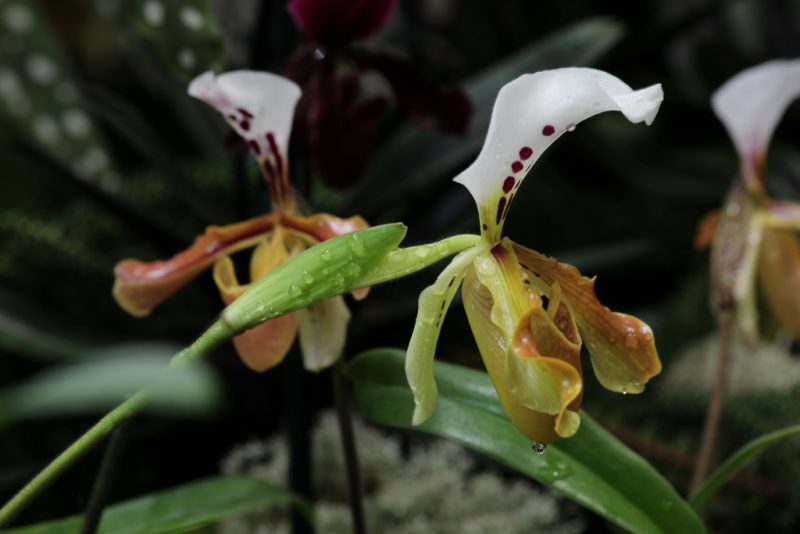
Venus slipper differs from other types of orchids in the original structure of the flower, whose lower petal has a bizarre, convex shape. For this feature, the plant received such an interesting name. All the rest of the flower petals are ordinary: the two main ones rise up, but they can be twisted like a spiral. The remaining petals are under the lip of the inflorescence and at the same time most often grow together.
This orchid from the genus Paphiopedilum looks very decorative, and literally everything bribes the florist in it - from compact shoots to the opportunity to grow it in the garden. This is acceptable, since the flower tolerates the temperature difference between night and day, and is also content with sparse watering.
How to choose a place and plant Venus slipper?
The culture will grow well in the shaded corner, so it is best to plant it on a plot of northern orientation.
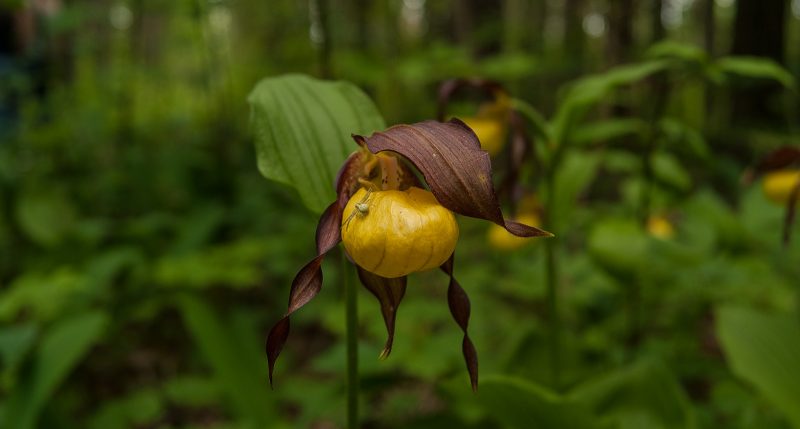
- A great place for an orchid is the shadow of the fence, a plot under a sprawling tree.
- A good neighborhood for Shoe will be ferns, which are a guide when choosing a site for planting, because these plants are similar in terms of soil and light requirements.
- It is best to plant an orchid in the fall or at the very beginning of spring, before it has yet begun to grow actively.
- Wells up to 0.4 m deep are prepared for planting, which are filled with a fertile substrate. The size of the hole should correspond to the size of the rhizome, and at the bottom it does not hurt to arrange drainage. Chipped limestone is usually used for these purposes.
You must make sure that there are no traces of rot or fungus on the rhizomes. Each affected area should be excised. If you ignore this advice, then it makes no sense to expect active flower growth.
Orchid planting step by step:
- Rhizomes are laid out horizontally, with extreme care, in the finished holes, and the roots are carefully distributed over the area of the pit. In orchids, they are unusually fragile, so work with them very carefully.
- When planting, the rhizomes are covered with a layer of fertile soil about 1 cm thick. If you deepen the plant more strongly, you will have to wait a very long time for its flowering.
- After planting, the earth is shed with a small amount of water and must be mulched. Pine needles, as well as moss or decayed leaves, have proven themselves well as mulch.
If the plant is planted in compliance with all the rules, then by the fourth year its roots will grow in a radius of more than half a meter, deepening by about 30 centimeters.
Growing and caring for flowers in the garden
With the arrival of warm days, they begin to take cover and loosen the soil. Care for the shoe is quite painstaking.
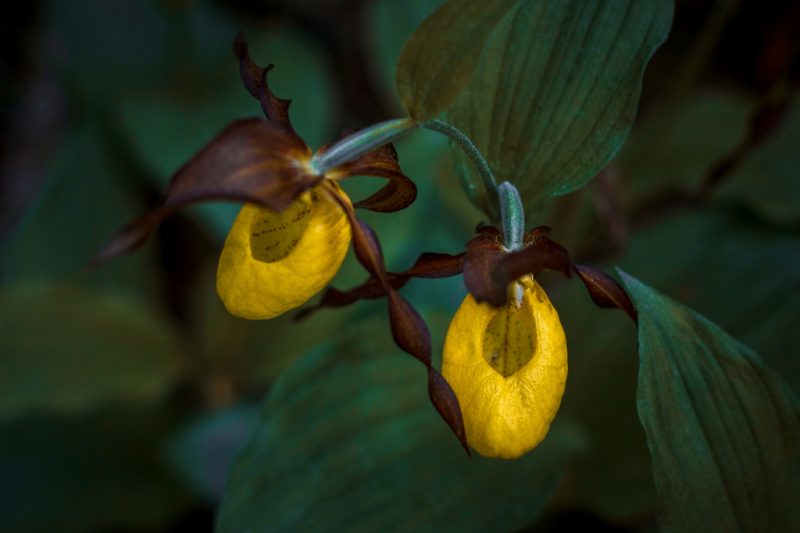
Paphiopedilums do not like heavy watering, but nevertheless it is necessary to shed a bush as soon as the top layer of the soil dries. It is necessary to do this so that the earthen lump around the rhizomes is always damp. But you need to remember that excess moisture is harmful to the orchid.
In addition to moisture, soil cleanliness is also important. However, weed grass should not be pulled out, but pruned at ground level to avoid accidentally damaging the fragile roots of an orchid. The root system of the plant is located very close to the surface, so you can not weave and dig the earth with tools.
If the shoe is regularly fed, then it will rush to growth and will bloom well.
- With the beginning of spring, the orchid is fed with the remaining mulch.
- The next top dressing is carried out only in early May. To this end, complex mineral compositions for flowering are used.
- The third top dressing is carried out in the middle of summer, after the flowers fade. But it should be remembered that these plants are too sensitive to an overabundance of fertilizers and may even die if they “overeat”.
It is important to make under the orchid only half the norm specified in the fertilizer instructions.
Wintering plants in the open ground
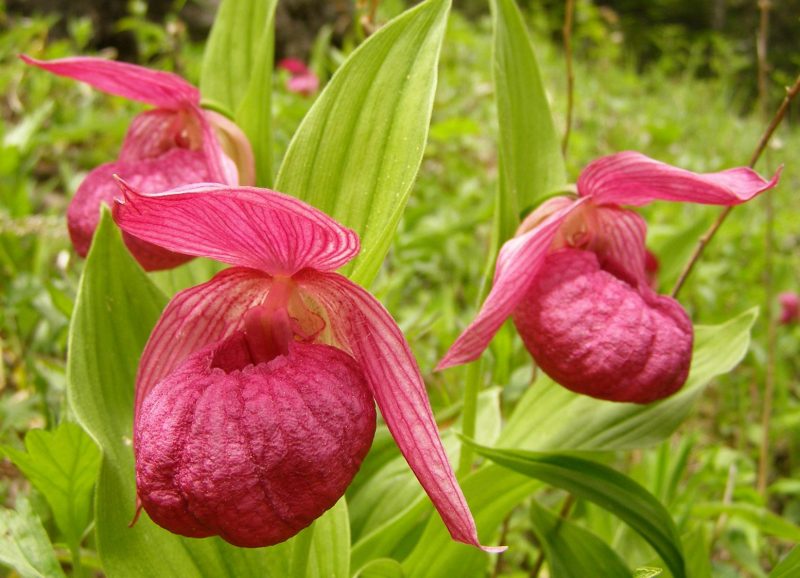
The shoe of Venus is frost-resistant and winters well even in open ground. If the frost stands below 37 degrees, the shoe will still tolerate it well. But still, in regions with harsh winters, shelter should be made for this exotic flower. You can simply cover it with a thick layer of snow, and in the middle lane orchids cover with fallen leaves.
Read also:pelargonium at home
How to care for flowers at home?
To successfully grow a flower at home, first you really need to decide on the correct location.
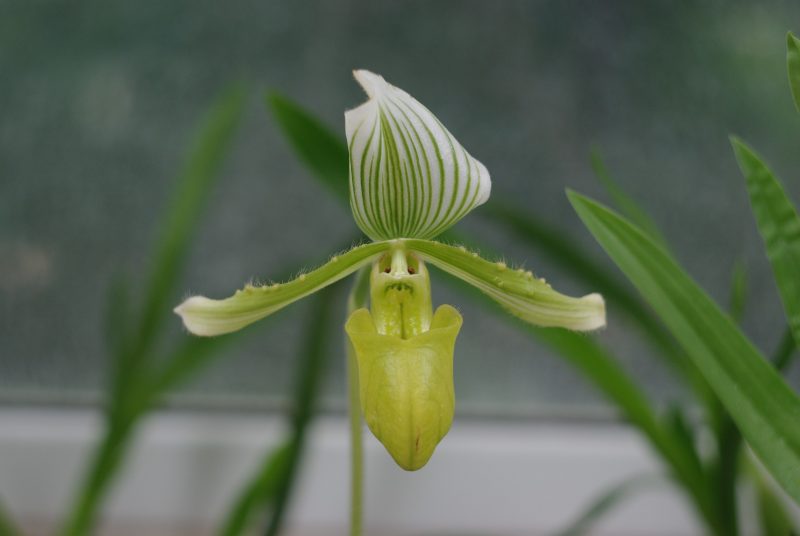
- The best place for an orchid is the east side.
- On the south window, the flowerpot needs to be shaded, as the sun can leave burns on its leaves.
- Excess light is harmful to the orchid, and it may even stop blooming.
Orchid Venus slipper is not demanding on heat, and for its growth requires a temperature of about + 16ºС. In summer, the temperature may rise to + 24ºС. The plant can die at temperatures below + 8ºС and above + 30ºС.
With room content, the orchid can not be over-moistened.Excess moisture is the most common reason these plants die.
- Water the flower in the morning once a week.
- In winter, the procedure is carried out only twice a month.
- Before watering, always check with your hand the humidity of the substrate in the flowerpot.
- If during watering water gets into the outlet of leaves, it must be removed with a napkin.
- When watering, the substrate is moistened with water from a watering can until it starts to drain into the pan. You can also place the pot in a basin of water and keep it there until the soil becomes wet.
- After all the manipulations, water must be drained from the pan.
At home, the slipper is fed with mineral compounds in which there is phosphorus, potassium and trace elements. In the spring make nitrogen. Fertilizers are added according to the instructions.
Breeding
Both garden orchid and indoor orchid reproduce perfectly by dividing the mother bush. The seed method is not so popular, since specimens grown from seeds bloom, as a rule, only for 5 years. Sometimes you have to wait up to 10 years, until such a plant gives the first bud.

When dividing the bush, it is dug up, the roots are carefully released from the soil and divided into several parts with a sharp and sterile tool. It is necessary to ensure that all dividends have kidneys. Each of them will need about three years to grow and develop, and only after that Venus slipper will blossom.
Dividing the bushes in the spring. For these purposes, plants that have reached the age of four are suitable.
How to deal with diseases and pests?
Most often, the flower suffers from diseases due to the fault of the grower, who violates the elementary rules of care. Frequent and plentiful watering, which leads to rotting of the roots, is very harmful to the slippers.
Read also:orchid does not bloom
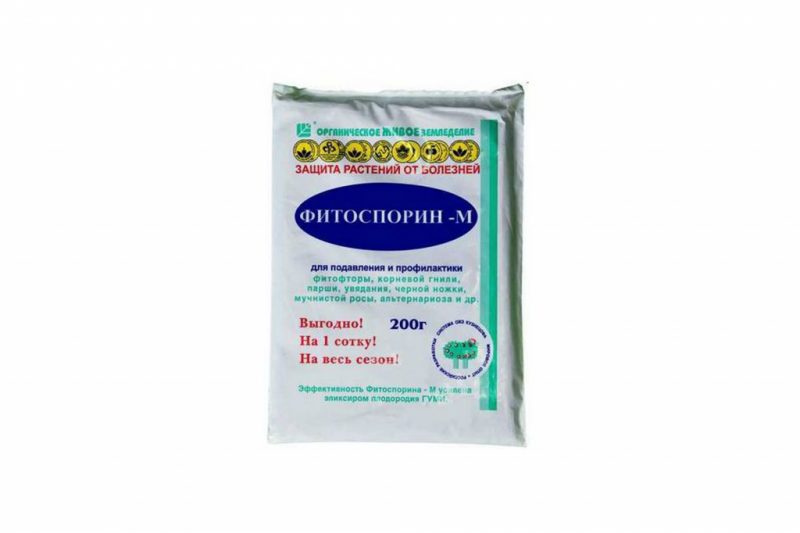
You can not use diseased roots for reproduction, which can infect the soil and healthy specimens. For the same reason, you cannot work with a plant with a non-sterile tool.
To rid the flower of rot of rhizomes, it is treated with biofungicides. These are the drugs Fitosporin, Alirin-B and Trichodermin.
Pest insects often appear on garden flowers. It:
- spider mite;
- aphid;
- scale insects.
Insects attack orchids during flowering. It is advisable not to use “chemistry” to control insects in this crop, it is better to use biological compounds such as “Bitoxyballicin-P” or “Bona-Forte”.
Legend of the Venus Shoe
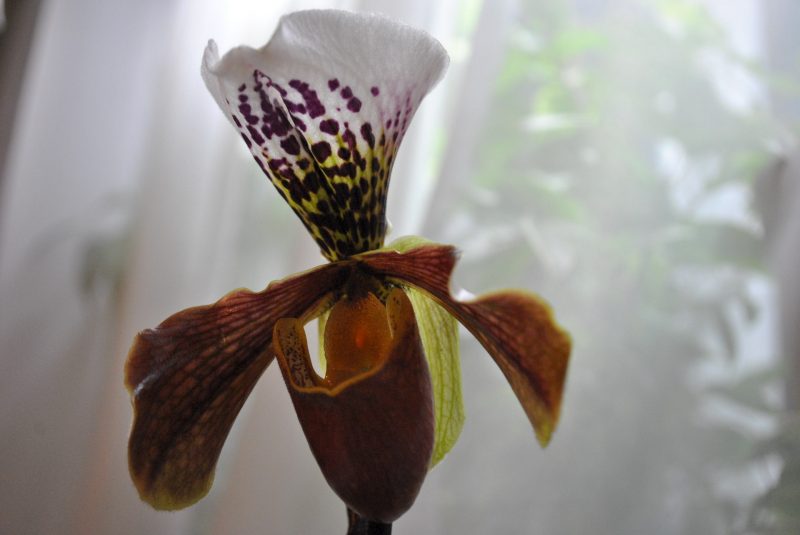
There is a legend about the divine origin of the Venus Shoe. When only gods lived on Earth, Venus and his lover decided to hunt. Suddenly a storm came, but the lovers noticed her late and did not have time to return. Fleeing from bad weather, they found shelter in a forest hut, but running away, Venus lost her shoe. Later, an ordinary mortal found a shoe, but barely touching it, turned into a divine beauty of a flower.












